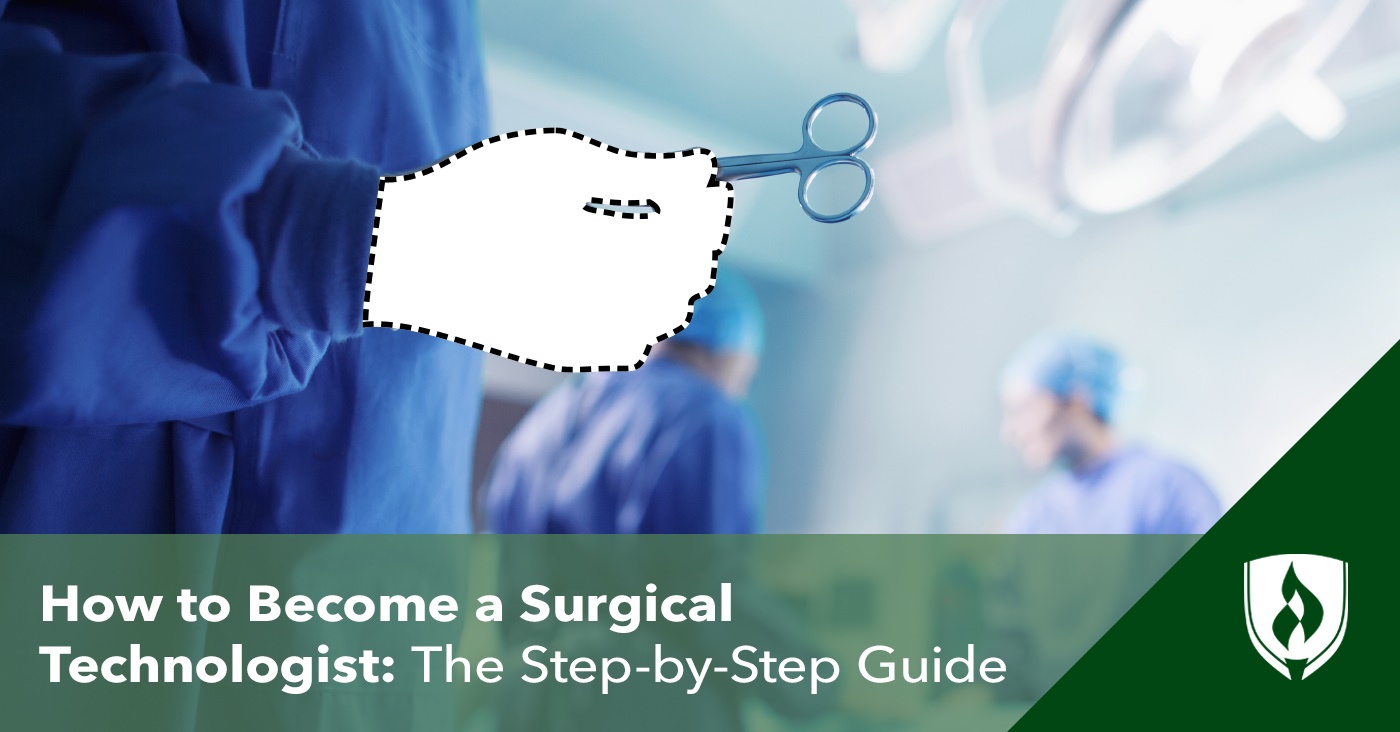You’re watching your favorite medical drama, where a patient is undergoing a tricky surgery. The surgeon delivers commands through the tense operating room (OR), instructing the team and successfully completing the procedure. However, while the cameras are focused on the surgeon, you can’t help but wonder about the surgical technologist working in the background to assist with the operation.

If Hollywood is to be believed, the only thing a surgical technologist needs to know is how to hand a surgeon a scalpel. You know there’s much more to the job than this, though. In fact, you might even be a little intimidated by a surgical technologist career. Don’t they need lots of complex medical training to be qualified? What will you be getting yourself into if you choose to pursue this as a career?
Surgical technologists do require specialized medical skills to properly care for patients and prep the OR, but the training to get you there isn’t as daunting as you might think. The educational path for this exciting career can be broken down into four basic steps: choosing a degree program, completing the coursework, earning certification and landing a job.
How to become a surgical technologist: The steps you can’t miss
When planning a potential career move, it never hurts to know the steps ahead. The four steps below will all require some significant thought and effort, so now’s the time to prepare yourself. Read on to learn more about each.
1. Choose a Surgical Technologist degree program
Good news: Becoming a surgical technologist doesn’t require the long years of medical school you might have been imagining. Surgical techs can get started with an Associate’s degree or postsecondary certificate, according to the Bureau of Labor Statistics (BLS).1 The Rasmussen University Surgical Technologist program, for instance, can be completed in as few as 21 months.2
Surgical tech programs may not take as long to complete as you expected, but choosing the right program is still an important part of your success, according to Chante Yearby, Surgical Technologist program coordinator at Rasmussen University. After doing some research and narrowing down your options, she recommends attending an information session and knowing what to look for in a high-quality program.
A few questions you may want to keep in mind when evaluating your options:
- Is this program accredited by the Comission on Accreditation of Allied Health Education Programs (CAAHEP)?3
- Do faculty for this program hold Certified Surgical Technologist (CST)® credentials?
- How will I afford this program?
- What are the program’s scheduling and time-commitment requirements?
Your research is an important step, so don’t hesitate to reach out to potential programs and ask questions.
2. Begin surgical technologist coursework
Once you’ve enrolled in a program, it’s time to get to work completing courses and earning your degree. Aspiring surgical techs can expect their coursework to prepare them for the important work of sterilizing the OR, caring for patients, working with specialized equipment and preventing infections. Your courses may include anatomy, microbiology, physiology, medical terminology and other topics related to healthcare, according to the BLS.1
Near the end of your education, you’ll gain hands-on experience in a clinical setting through practicums. Practicums are a valuable part of a surgical tech’s training, offering real-life, supervised experience that proves you have the knowledge you need to succeed in this career. Each program will have its own requirements for practicum hours and scheduling.
Not only will practicums help you feel more confident in applying your skills in real-life situations, but they can also help you land a job after graduation.
“Students keep a log of all the cases they perform during the practicum rotation to help with their job search,” Yearby says.
The Surgical Technologist program at Rasmussen University includes courses like Operating Room Preparation, Surgical Procedures, Sterilization Techniques and Compassionate Patient Care.
3. Prepare for and pass the Certified Surgical Technologist® exam
To be clear, passing the Certified Surgical Technologist (CST) exam isn’t required for practice in every state. That said, passing it shows that you’re qualified and serious about your career as a surgical technologist and may satisfy non-licensure related employer requirements.
“Being certified will help with the job search when the time comes,” Yearby says.
The test itself covers all the basics an entry-level surgical tech should know. This includes practical procedural knowledge as well as your understanding of relevant subjects like anatomy, physiology, microbiology and surgical pharmacology. Once you’ve earned your CST credential, you can maintain it by pursuing professional development and applying for recertification every four years.
4. Find a Surgical Technologist job
The job hunt can feel like the hardest part of the process. You put in the work to earn your degree, but there’s still more to be done in order to land a job. Thankfully, there are steps you can take to ensure that you have the skills and experience employers are looking for.
Surgical technologist careers are projected to grow faster than the national average, increasing by a projected rate of nine percent through 2030, according to the BLS.1 That amounts to a projection of 9,500 new surgical tech jobs! We dove into real-time job postings to uncover the skills employers are looking for when they fill those open surgical tech positions:4
- Patient care
- Aseptic technique
- Knowledge of surgical instruments
- Sterile procedures
- Life support
- Cardiopulmonary resuscitation (CPR)
- Patient safety
- Perioperative procedures
- Patient transportation and transfer
You’ll gain valuable technical skills like these in a high-quality Surgical Technologist degree program, along with a handful of soft skills that come in handy on the job. “Employers are also looking for strong team players, great attitudes and a patient-centered mindset,” Yearby says.
Showcasing your relevant clinical experience on your resume is another reliable technique for demonstrating your worth to future employers. “Employers are looking for strong clinical experience from new surgical techs,” Yearby says. “If the student performs well during their practicum rotation, it is possible the practicum site might invite the student to apply as soon as they graduate.”
Join the ranks of surgical technologists
You’ve done all the research about what it takes to be a surgical tech. Now that you know how to become a surgical technologist, you can see that getting started in this exciting healthcare career is less daunting than you first imagined.
There’s no better time than now to start your journey toward becoming a surgical tech. Take the first step by checking out the Rasmussen University Surgical Technologist Associate’s degree and discovering all that this program has to offer.
Looking to explore more options? Check out our other article, "Scrub Nurse vs. Surgical Tech: Decoding the Differences in the OR and Beyond".
1Bureau of Labor Statistics, U.S. Department of Labor, Occupational Outlook Handbook, [information accessed February 2022] https://www.bls.gov/ooh/healthcare/surgical-technologists.htm. Information represents national, averaged data for the occupations listed and include workers at all levels of education and experience. Employment conditions in your area may vary.
2Completion time is dependent on the number of transfer credits accepted and the number of courses completed each term.
3 The Surgical Technologist AAS Program at the Brooklyn Park/Maple Grove, Minnesota, campuses, the Central Pasco, Florida, campus, and the Rockford and Romeoville/Joliet, Illinois, campuses is accredited by the Commission on Accreditation of Allied Health Education Programs (CAAHEP.org) on the recommendation of the Accreditation Review Council on Education in Surgical Technology and Surgical Assisting (ARC/STSA).
Commission on Accreditation of Allied Health Education Programs
9355 113th Street N, Suite 7709
Seminole, FL 33775
727-210-2350A
www.caahep.org
4 Burning-Glass.com (analysis of 64,936 surgical technologist job postings, Aug. 01, 2020 – Jul. 31, 2021).
Certified Surgical Technologist is a registered trademark of the National Board of Surgical Technology and Surgical Assisting.




